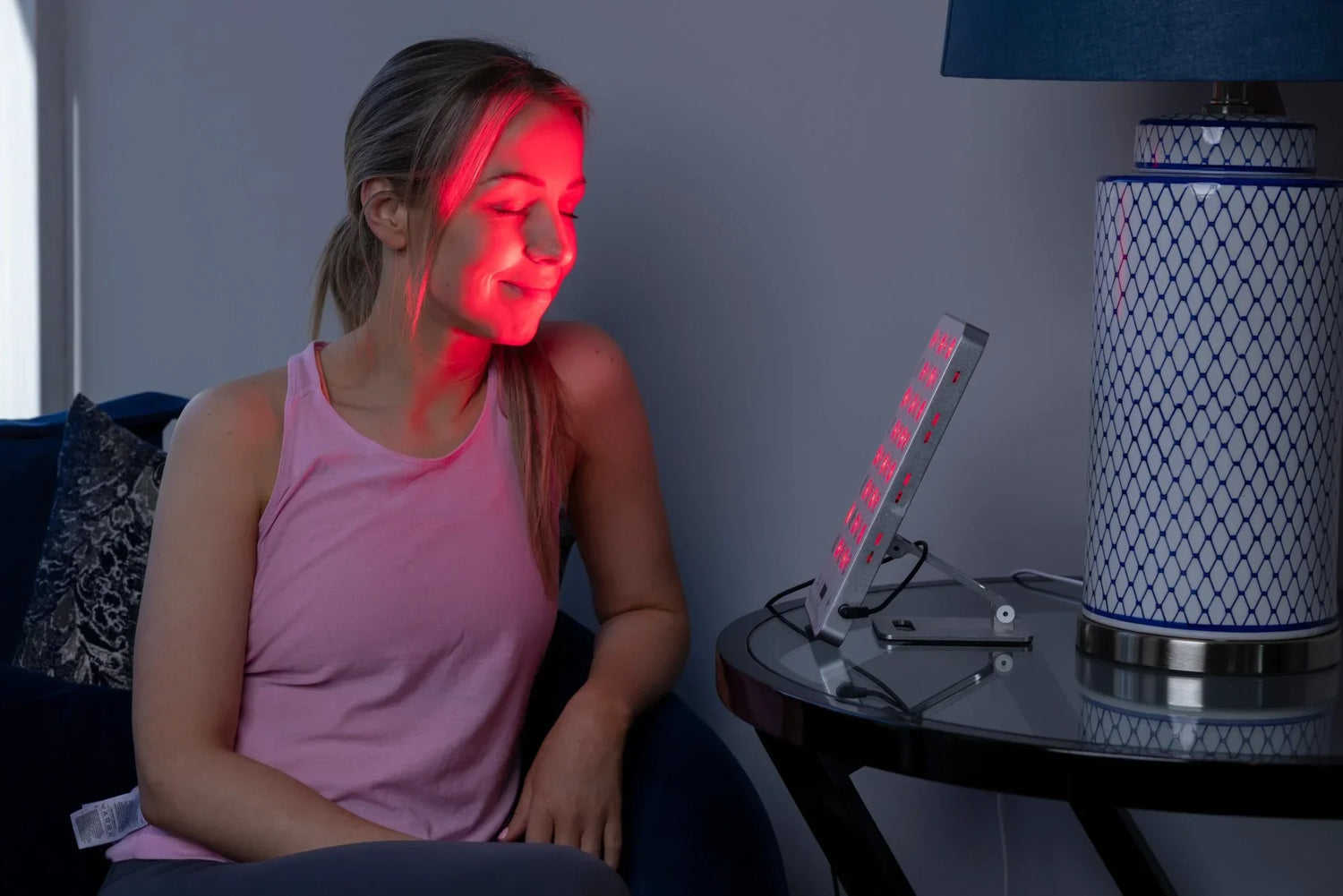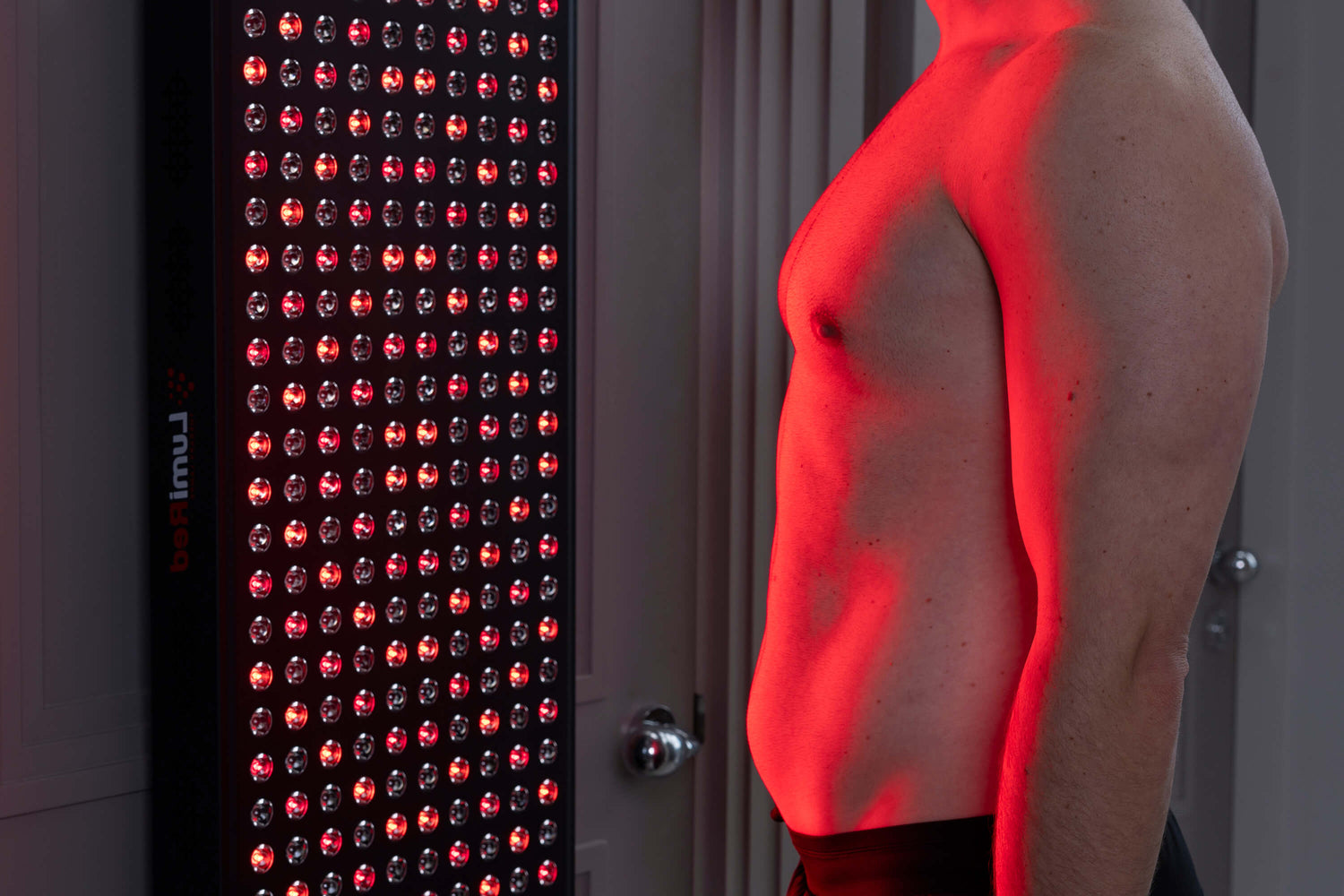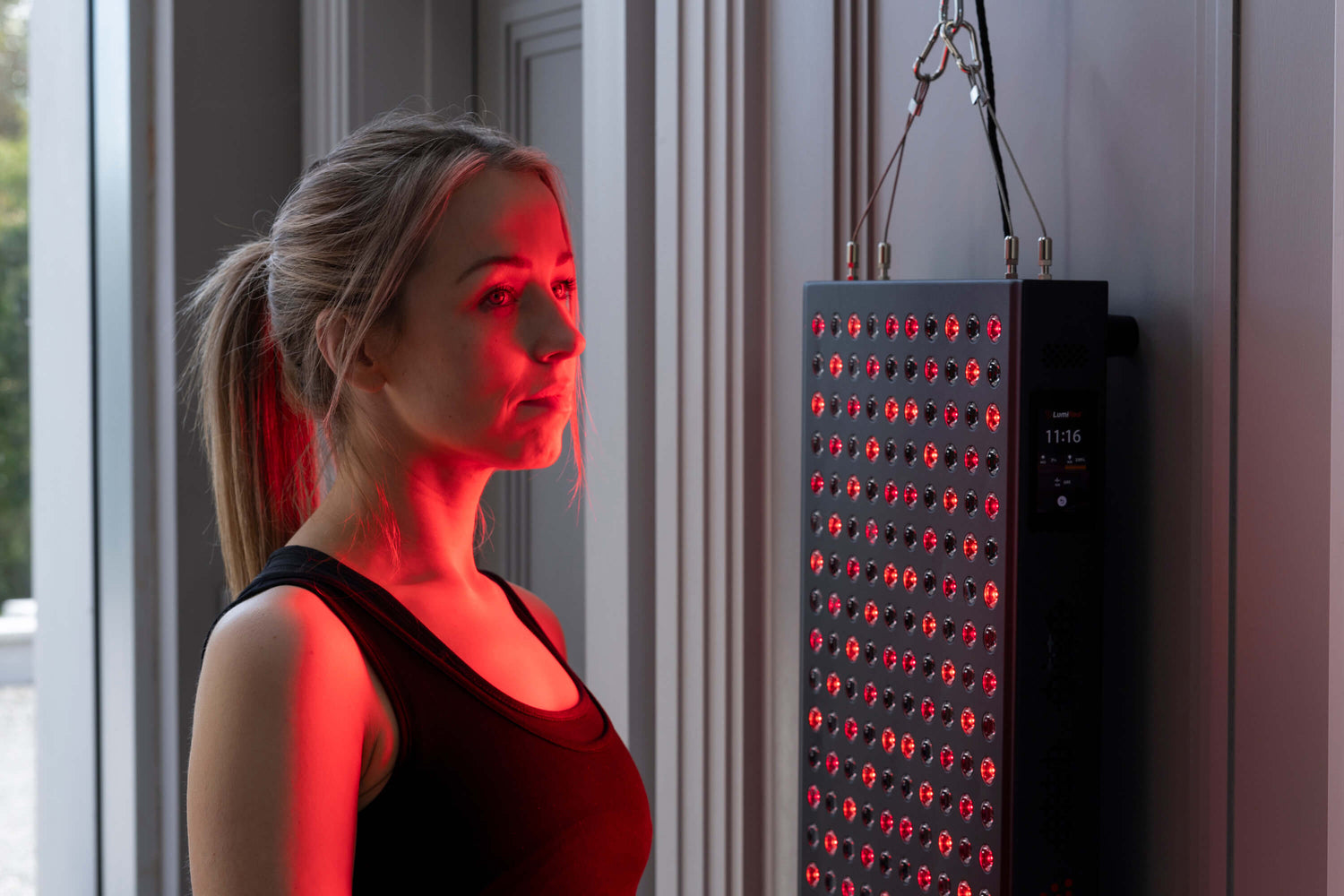Your skin is actually an organ and provides protection for your internal tissues, like the organs your body relies on for survival. As we go through life, our skin is exposed to many harmful substances, toxins, microbes, and other particles. These environmental factors can have a significant impact on your skin’s health and appearance. There are also skin conditions, like eczema and acne, that can quickly take a toll on your skin. Red light therapy might be an excellent addition to your skincare routine, giving you access to a rejuvenating treatment that helps to repair and improve your skin.
How Does Red Light Therapy Affect Your Skin
Red light therapy is a trending treatment that people are turning to for everything from dealing with wrinkles to stopping insomnia. The therapy essentially uses low wavelengths in the form of red light. These devices expose your skin to the red light, but the light itself can reach deep into your body. The therapy has been said to rejuvenate our bodies and promote healing - but our focus now is to see how this technology benefits your skin.
The potential of red light therapy comes in when we take a closer look at mitochondria. This is something that forms part of all the cells in your body. Without the mitochondria, your cells wouldn’t have the energy they need to function the way they should. Your mitochondria essentially absorb the light that these devices emit, and, in turn, this provides a boost in cellular energy.
The idea behind this entire pathway is that, when cells shave more energy, they can work better. This includes cells that make up your skin.
There are different ways in which red light therapy can help the skin, so it’s important to consider each of these advantages individually.
Collagen production
Collagen is a type of protein that is important for the elasticity of your skin. In addition to keeping your skin elastic, collagen also plays a role in factors like the structure and strength of your skin. Over time, collagen production starts to decline, which increases the likeliness of wrinkles and a sagging appearance. Red light therapy helps by stimulating the production of collagen, which can improve elasticity and reduce the appearance of wrinkles.
Fibroblast production
Red light therapy actually works on molecules that come even before collagen - they are called fibroblasts. When you use red light therapy on your skin regularly, it can also make your body create more fibroblasts. These molecules are actually responsible for creating collagen.
Blood circulation
If there is not enough blood that reaches your skin, it can cause problems with cellular health. This is because blood carries both oxygen and nutrients to your cells. Red light therapy is known for its ability to increase blood circulation. By targeting these devices directly in problematic areas, you can increase the amount of blood that circulates in that area. This, in turn, would help to make more oxygen and nutrients available to cells in the area, essentially boosting their efficacy.
Antioxidant activity
Many of the things we’re exposed to daily cause free radicals to thrive in our bodies. These molecules cause damage to your body in various ways, through a process called oxidative stress. Antioxidants are molecules that actually fight off these free radicals. As you continue to experience exposure to certain environmental factors, your body’s antioxidant activity can decline, making it less capable of fighting against these free radicals. By enhancing the antioxidant capacity of your skin, red light therapy also helps to lessen oxidative stress. This can help to reduce the rate at which you experience skin aging.
Inflammation
Another common problem that we experience with skin health is inflammation. If you have problems with eczema or acne, for example, then you’re already familiar with inflammation. This swelling on your skin can leave scars and be damaging in some cases. Red light therapy helps to reduce the amount of inflammation you experience without affecting the rate at which your skin heals from acne and other problems.
When Should You Use Red Light Therapy For Your Skin?
Red light therapy can be a great maintenance tool that you can use regularly to preserve the appearance and well-being of your skin. However, the technology can also be very useful for specific problems that you face.
If you have scars, skin that has been damaged due to sun exposure, or want to improve the general texture of your skin, then red light therapy is definitely a good option for you. Additionally, it can also be used to help with acne, speed up the wound healing process, reduce the appearance of stretch marks, and even if you need an anti-aging solution.
The frequency at which you should use red light therapy depends on a few factors. Start by considering why you want to use the technology. You also have to consider whether you have easy access to one of these devices at home. In this case, you can consider using the red light therapy device as frequently as three times every day. Spending about 20 minutes in front of the device for each session is a good idea, as this gives you sufficient exposure of red light to ensure you can experience the benefits that it can offer.
We all have to abide by a busy schedule in the modern day, though. That means it could be difficult to squeeze three 20-minute sessions into your daily routine. Fortunately, when you opt for a high-quality device, just one or two sessions every day can still give you noticeable results. Many of these devices are also rather compact, which means it should not be a significant problem to take it with you. With targeted treatment devices, for example, you can continue with your daily routine while resting the target therapy areas close to the device.
Final Takeaway
Taking care of your skin is incredibly important. It is the largest organ of your body, after all. When it comes to caring for your skin, it’s crucial to avoid things that are harsh, especially if you struggle with sensitivities. While there are medicated treatments for common skin conditions, you also have to note their side effects.
Red light therapy offers a safe and natural alternative that energizes the mitochondria in your cells. This gives your cells more energy and essentially makes them work more effectively. Red light therapy can also help to lower inflammation, which is a common side-effect of certain skin conditions. Overall, red light therapy can effectively reduce skin problems and give you clear, flawless skin when used on a regular basis.
References
Skin Layers. MedlinePlus. https://medlineplus.gov/ency/imagepages/8912.htm
Red Light Therapy. Cleveland Clinic. https://my.clevelandclinic.org/health/articles/22114-red-light-therapy
- Wunsch, K. Matuschka. A Controlled Trial to Determine the Efficacy of Red and Near-Infrared Light Treatment in Patient Satisfaction, Reduction of Fine Lines, Wrinkles, Skin Roughness, and Intradermal Collagen Density Increase. Mary Ann Liebert Journal. Published 1 February 2014. https://www.ncbi.nlm.nih.gov/pmc/articles/PMC3926176/
H.E. Oh, A. Yoon, Y.G. Park. Red Light Enhances the Antioxidant Properties and Growth of Rubus hongneonsis. MDPI Plants. Published 26 November 2021. https://www.ncbi.nlm.nih.gov/pmc/articles/PMC8703718/




